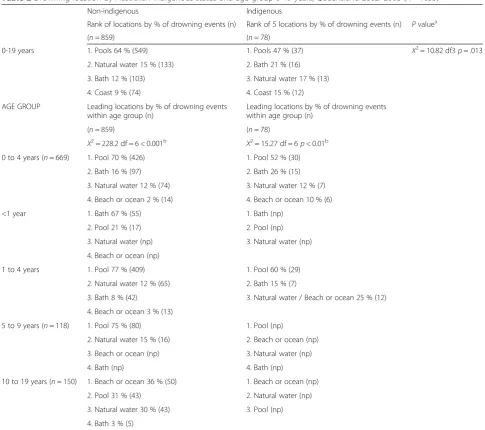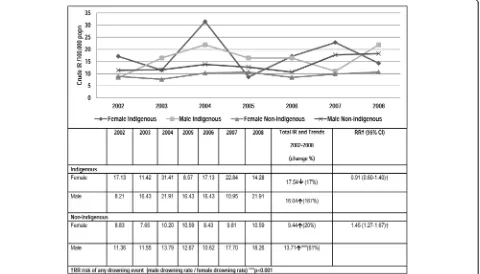Drowning in Aboriginal and Torres Strait Islander children and adolescents in Queensland (Australia)
Full text
Figure




Related documents
Australia to ensure that Aboriginal and Torres Strait Islander Education is a priority and.. to 'close the gap' will be achieved when all our children enjoy quality teaching
This paper uses data from the Longitudinal Study of Indigenous children (LSIC) to explore patterns of social exclusion across social, economic, community and well- being
The highest Aboriginal and Torres Strait Islander: non-Indigenous rate ratio for deaths from chronic lower respiratory diseases (as an underlying cause of death) was in the 45-54
• Under section 4.4 Overview (page 14) it is important that children are included in the following statement outlining the scope of the Framework to recognise that not all
Another reason for limited variability in the data could be the young age of the children. It is possible that some of
Thus, in 164 urban-based Indigenous children present- ing to an urban primary health care service, we described the prevalence of upper airway respiratory viruses and bacteria.. We
Supplementary Table 6: Far North Queensland Aboriginal and/or Torres Strait Islander children with a Ferret record seen by health services at age six to 23 months (n = 904)
child are just too overloaded - often with 2-3 foster children.” (non-Indigenous agency representative) The shortage of carers means that many Aboriginal and Torres
